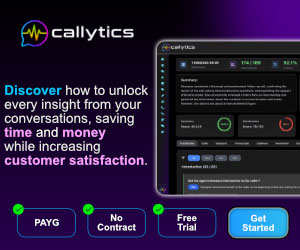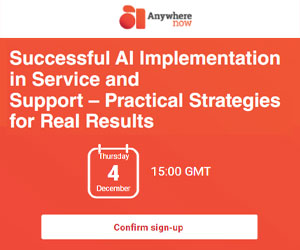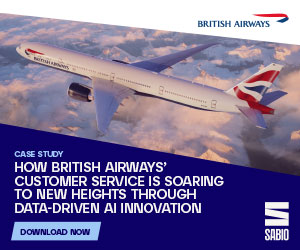Although organisations have long touted the idea that “the customer comes first”, the number of enterprises that can truly be described as customer-centric is smaller than most people would think. Many companies have a view of how customers perceive them, but that view may not be in alignment with how customers really see the company. They have an inside-out view that is disconnected from the outside-in perspective.
If companies are unaware of how their customers perceive them, it’s not for lack of information. Far from it. In fact, today’s enterprises collect more data than ever in the customer-facing parts of their organisation, such as the contact centre and branch offices.
Speech Analytics in a Customer-centric Organisation
Rather than a lack of data, the challenge is to translate this data into actionable information, and make that information available enterprise-wide. There’s also a tendency for decision makers to operate in a vacuum, basing decisions on what they think customers want, rather than confirming their ideas through direct contact with consumers.
To address this challenge, contact centre managers and executives are beginning to explore what it really takes to be a customer-centric enterprise, and how implementing technologies and processes can help integrate and streamline contact centre and enterprise sales and service activities.
Analytics: Delivering the Why Behind the What
Contact centres produce more data than just about any other part of the business – data that tells you what is going on in your contact centre, but often not why you get the results you do. Speech and data analytics help organisations understand the why behind the what by transforming customer interactions captured in their contact centres into actionable intelligence – intelligence they can use to take action that will make an impact on the business.
Speech analytics automatically categorises and analyses call content to reveal the root causes of customer contacts, and surface trends that might otherwise go undetected without listening to thousands of calls. Data analytics uncover call scenarios that either help or hurt your ability to meet key performance objectives. These tools can reveal process issues – including those in the back office – that are impacting the customer experience.
By enabling root-cause analysis, speech and data analytics can help organisations transform customer data – structured and unstructured – into meaningful information. Armed with data, not hunches, organisations can understand customer service issues and take appropriate action to optimise workforce performance and correct or enhance processes.
For example, enterprises can leverage an analytics solution to help:
- Forecast customer demand and schedule the right staff with the right skill sets at the right time.
- Provide insight into customer satisfaction, shifting the emphasis of quality management from what employees are doing to what customers are doing.
- Answer questions such as: What are customers saying? Are they satisfied? If not, why? What can be done to fix the problem?
- Detect strengths and weaknesses in agent skill sets, enabling supervisors to deliver targeted coaching or training.
- Provide key performance indicators, scorecards, and training to personnel to help them get a sense of their own performance and build their skills.
By culling insights from mountains of data that can be acted upon immediately by stakeholders, analytics help drive quality, performance and the customer experience. Moreover, this information can be fed back into the enterprise, creating a continuous feedback cycle to propel improvement.
Ask Customers What They Think…They’ll Thank You for It!
If you want to know what your customers are thinking, ask them! Obtaining customer feedback allows customers to express what’s working, vent about what’s not, and share their perspectives on how you can make them happier consumers – as well as provide you with a goldmine of valuable intelligence on products, services, competitors and more. Capturing real customer data is much more effective than making decisions based on assumptions.
Customer feedback management solutions can enable companies to collect, report and incorporate customer-driven information, performance data and satisfaction metrics. More specifically, customer feedback can help organisations:
- Make informed business decisions by capturing customer feedback – and the context in which it was provided.
- Gain increased visibility into customer service processes and performance based on the specific people, products and processes that impact the customer experience.
- Measure business and revenue drivers in detail – including customer loyalty – through net promoter scores and other metrics.
- Move beyond sampling to capture statistically valid, census-level data – even with large numbers of customers and multiple sites – across all contact channels, including IVR, web and email.
Customer feedback management solutions engage customers immediately after their interactions with an agent over IVR, Web and email. More than just survey systems, they enable organisations to gather data on products, processes, staff performance, customer loyalty and satisfaction levels to provide a valuable “outside in” perspective.
By capturing the voice of the customer at all levels, organisations can begin to accurately measure true customer loyalty, validate and understand drivers of satisfaction, and identify detailed areas of opportunity and improvement – taking a giant leap in cracking the customer perception code.
As new business challenges emerge, analytics and customer feedback management solutions can play a pivotal role in helping organisations identify and address them before they significantly impact the quality of the customer experience. By helping organisations uncover the why behind the what, these solutions can enable enterprises to reduce costs, sharpen their competitive edge, enhance sales and improve the customer experience.
Further Reading
- Speech Analytics: From the Contact Centre to the Enterprise
- Speech Analytics for Customer Surveys
- Speech Analytics in Customer Service
- Typical uses for Speech Analytics
Contributors
- Verint
Author: Jonty Pearce
Published On: 14th Mar 2010 - Last modified: 15th Aug 2025
Read more about - Customer Service Strategy, Service Strategy, Speech Analytics




































